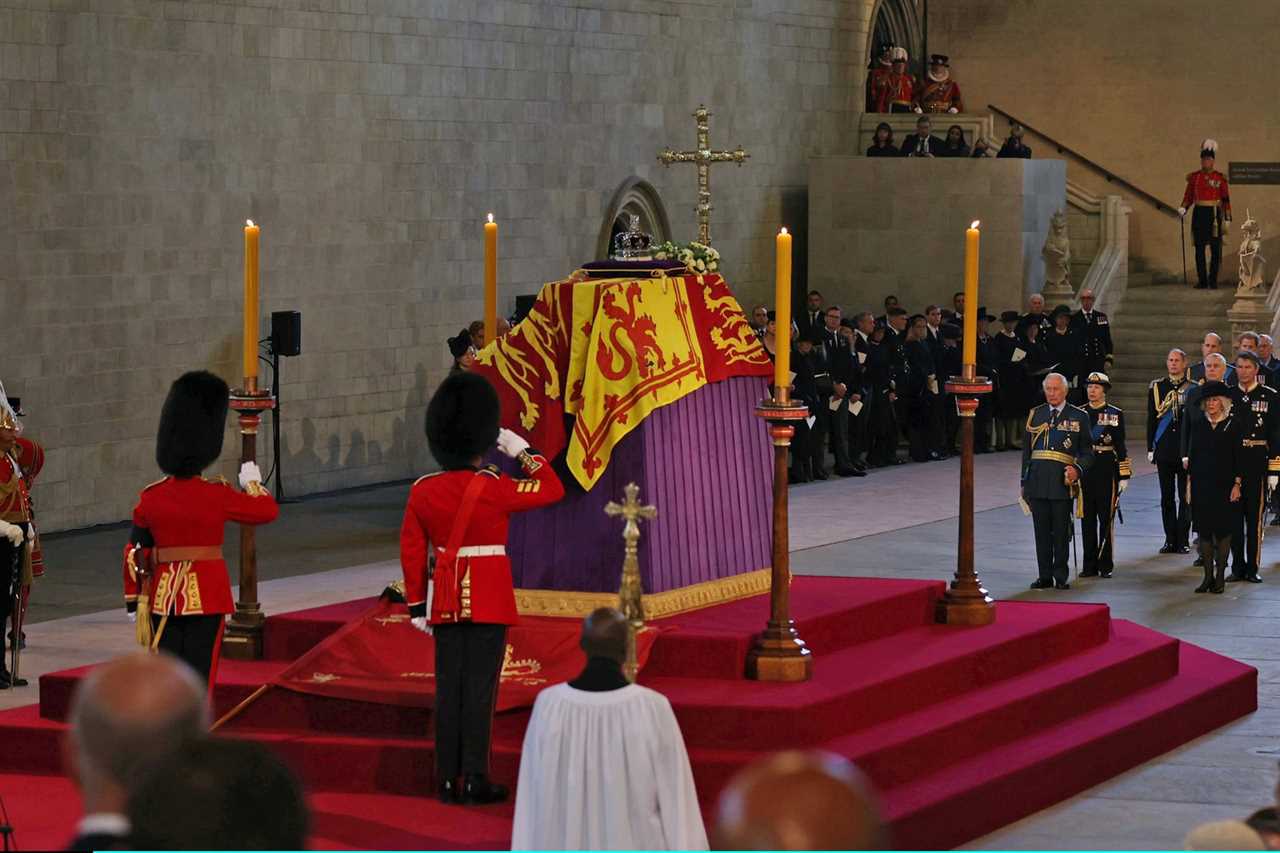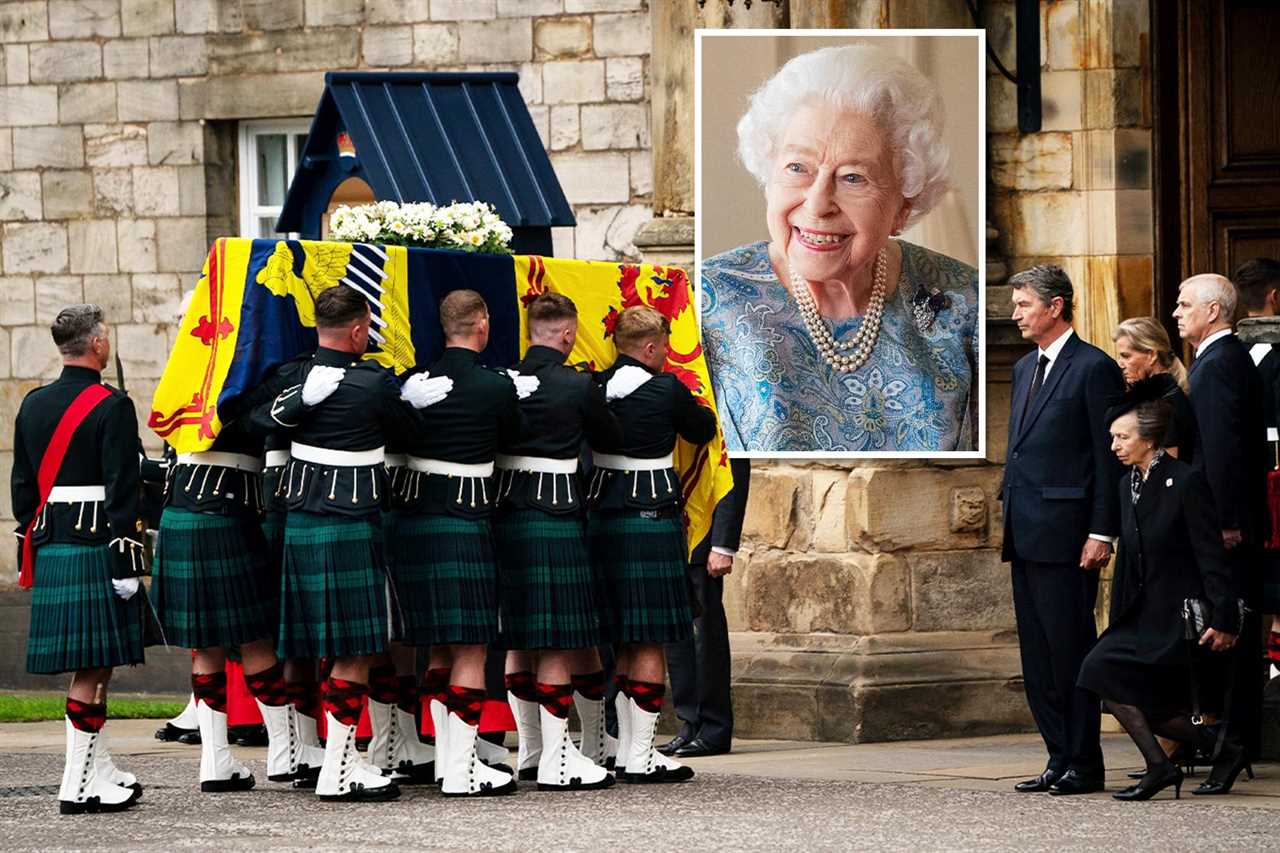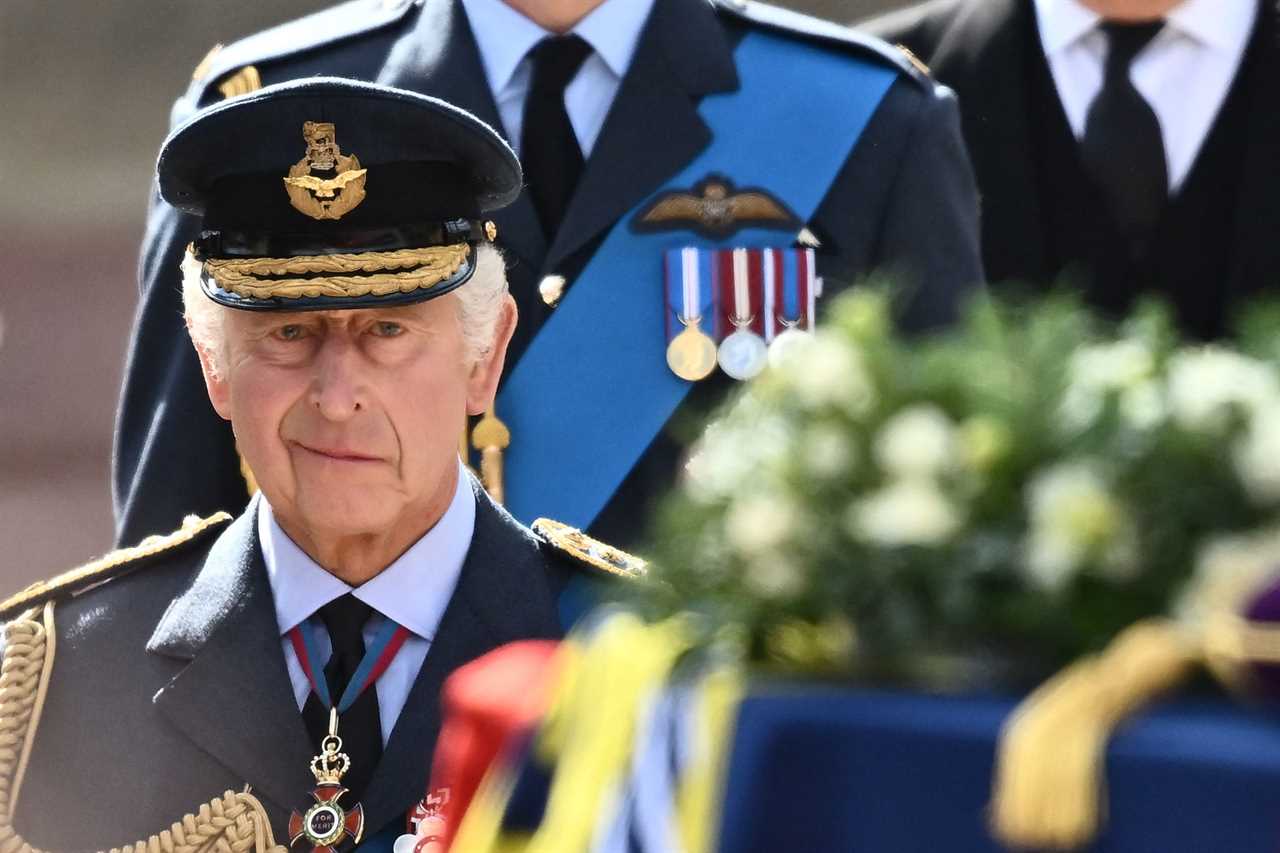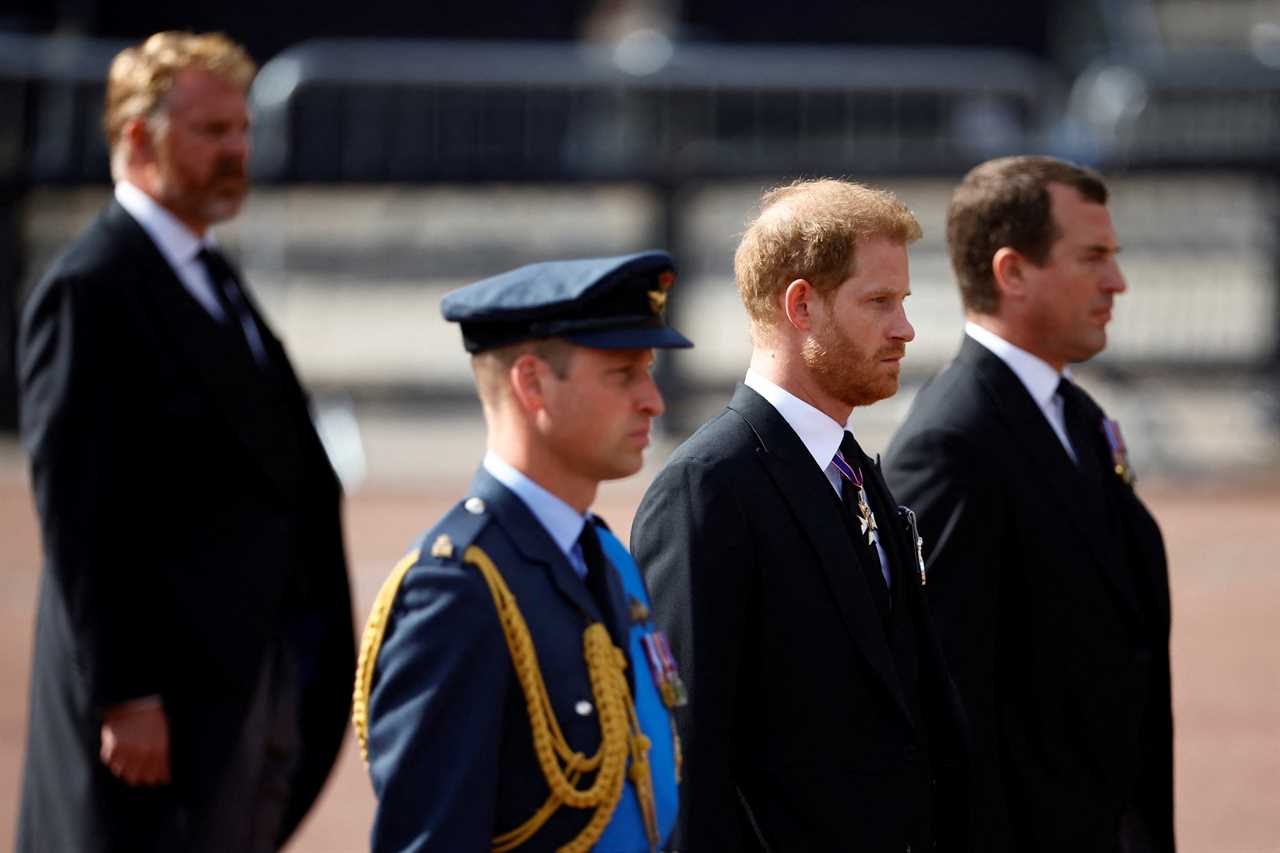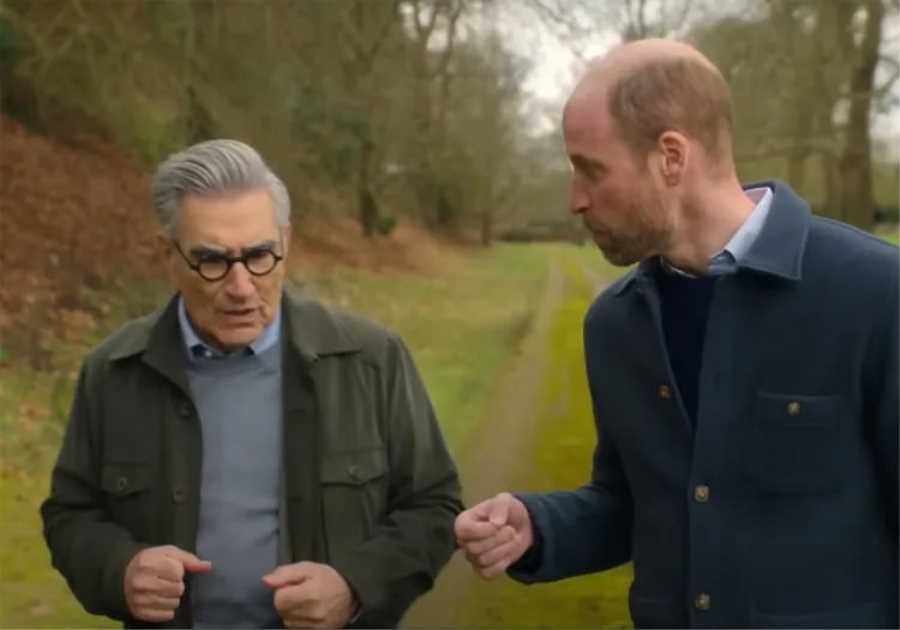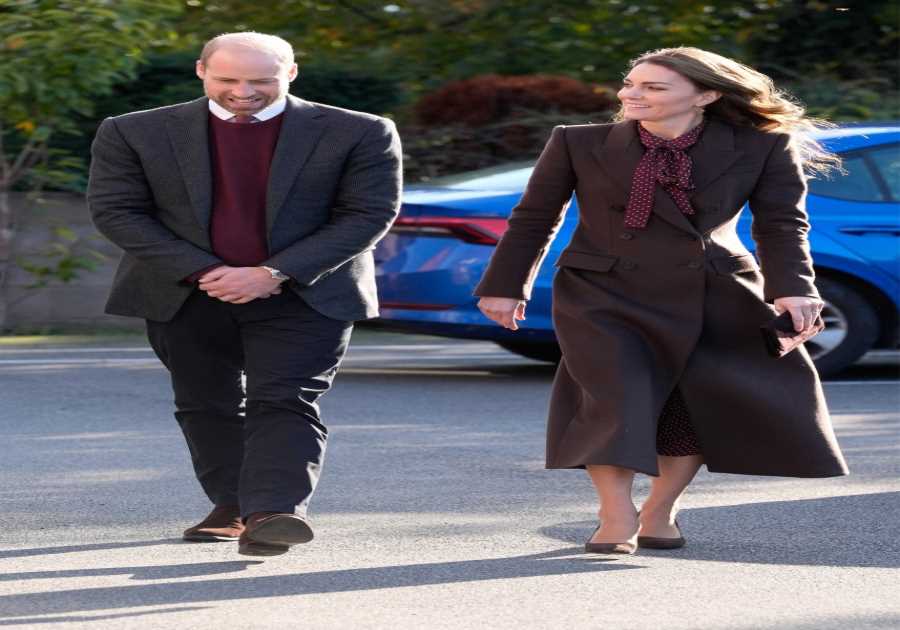SUN royal photographer Arthur Edwards once asked the Queen: “Why do you go to Balmoral every year for your holidays?”
She replied: “Where else could I go?”
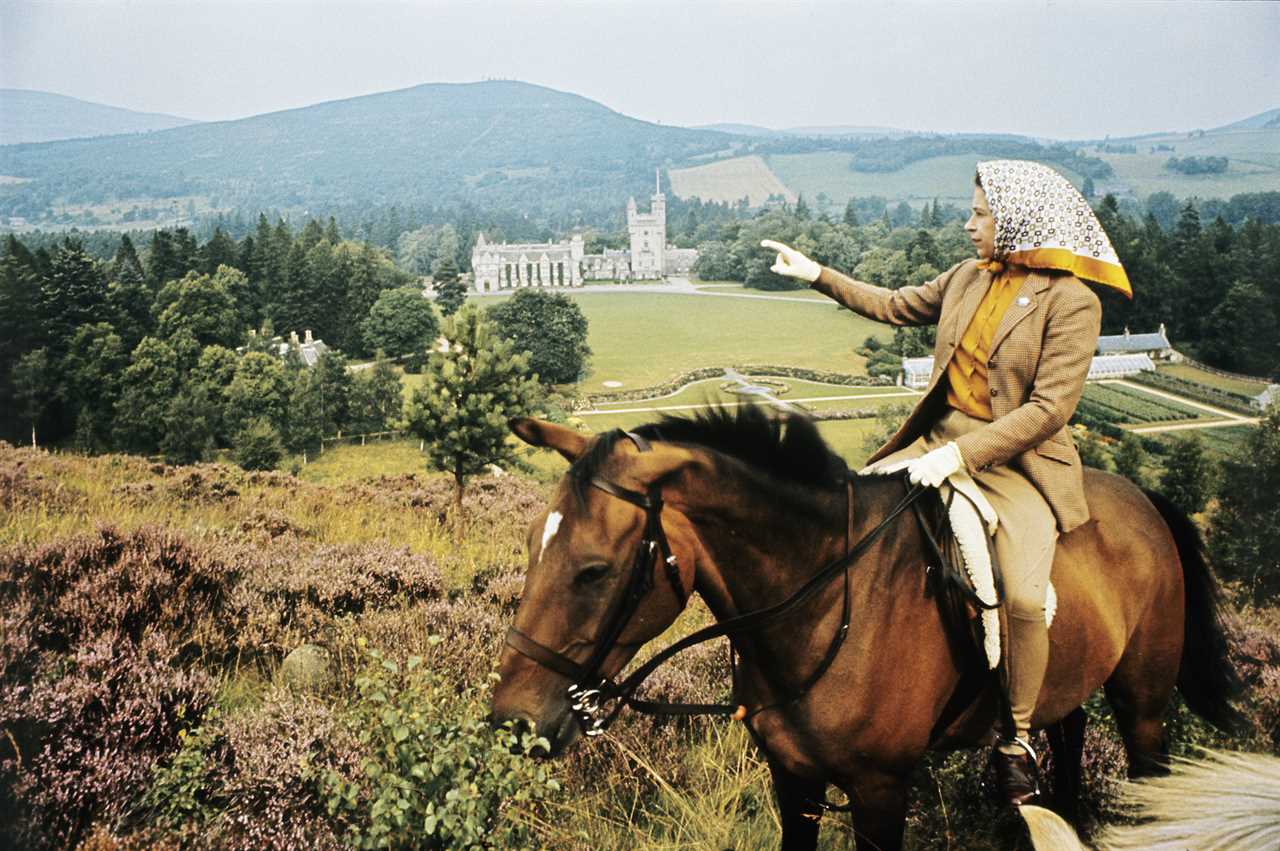
The Queen said she loved being at Balmoral – pictured in 1971
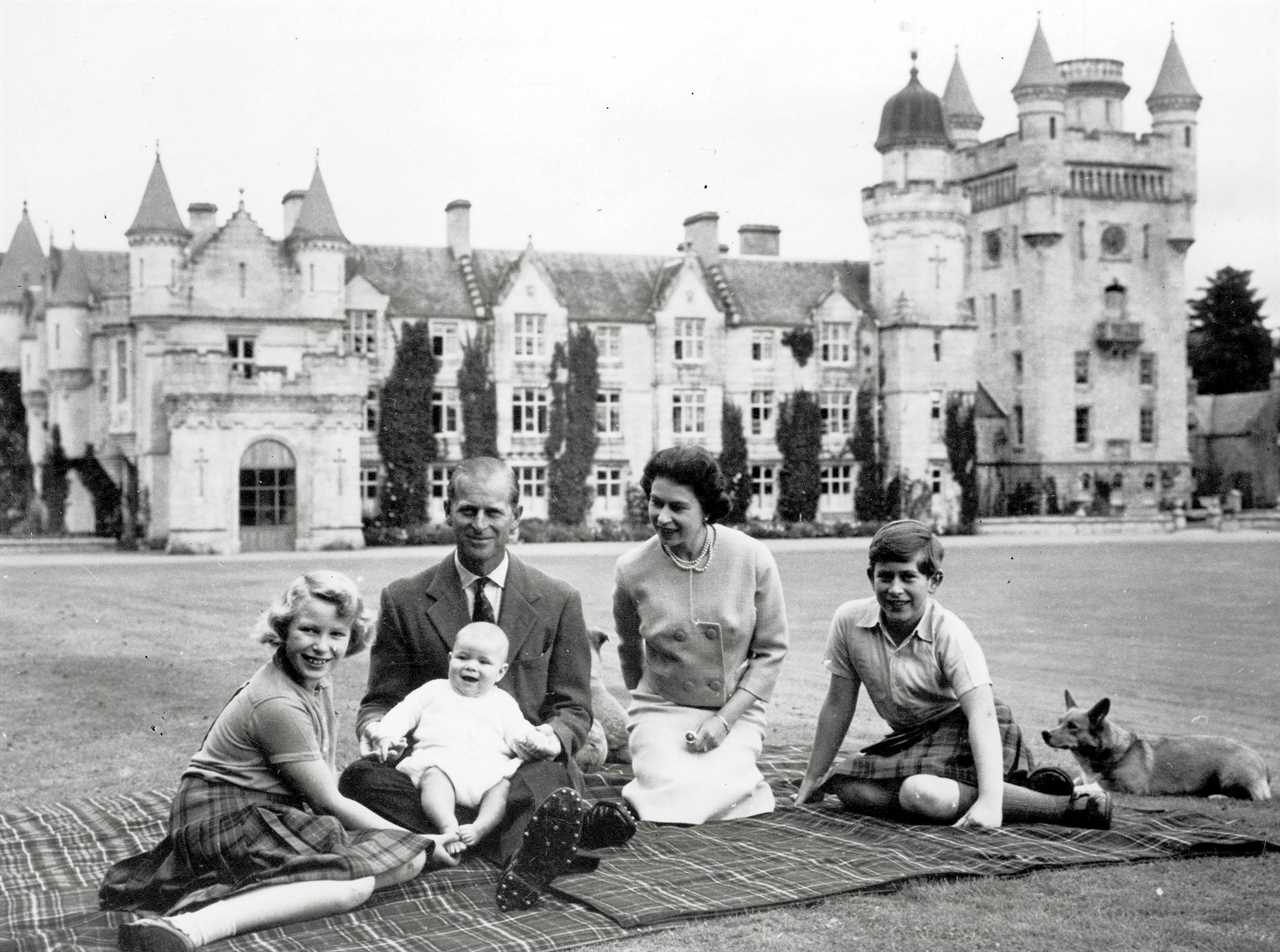
Family time picnicking with Prince Philip, Anne, Andrew and Charles at Balmoral in 1960
Arthur protested: “You’re the Queen — you could go anywhere, Ma’am!”
She replied: “But I love it there.”
It was a lady-in-waiting who explained to Arthur exactly why Her Majesty loved to spend summer after summer among the Highland moors and lochs, rather than swapping them once in a while for a sun-kissed tropical island like any other multi-millionaire.
She explained: “What you don’t realise is that when she goes through the gates at Balmoral at the start of her summer holidays, she kicks off her shoes in delight because the people who work on the estate pay her the greatest privilege of all — they ignore her.”
Balmoral was also a haven that could not be taken away from her, unlike her other great holiday retreat, the Royal Yacht Britannia.
When the taxpayer-funded vessel was decommissioned in 1997 after being deemed too expensive, the Queen shed tears for the loss of a floating home that held decades of happy memories.
But Balmoral belongs to her own family.
And she had her great-great grandparents Queen Victoria and Prince Albert to thank for buying the family holiday retreat.
The pair were newlyweds in their early twenties when they visited the Highlands for the first time in 1842.
Victoria was instantly smitten, writing: “All seemed to breathe freedom and peace and to make one forget the world and its sad turmoils.”
She and Albert spent the next few years looking for a home to buy in this wonderland, and fell for Balmoral when they were sent watercolour images of its 50,000 acres showing “a wilderness of moss and moorland, indispersed with craggy ridges”.
They took out a lease in 1848 and purchased it outright in 1852.

It was then that the couple decided the “small castle” already there was not big enough, and instead designed the granite baronial-style home that Elizabeth would come to love.
Her Majesty first visited the estate as a baby, and some of the earliest family photos show her being pushed around the grounds in a pram.
Elizabeth, her sister Margaret and parents the Duke and Duchess of York — later King and Queen — would return year after year, firmly bedding in the sacred family tradition of a ten-week annual visit.
The girls’ governess, Marion “Crawfie” Crawford, recalled in her book The Little Princesses: “They looked forward to it all the year round. It tended to be the chief landmark in their calendar. Things were apt to date from ‘before we went to Scotland’ or ‘when we got back from Scotland’.”
Crawfie also noted how domestic the royals’ lives were at Balmoral, with picnics followed by sausages for tea, accompanied by onions fried personally by the girls’ mother.
Elizabeth II’s own family would continue this tradition of informal style at the castle — famously, the late Duke of Edinburgh would fire up the barbecue to cook meals, and designed a special car trailer just to carry their picnics.
Meanwhile, as former Prime Minister Tony Blair revealed, the Queen would do the washing- up.
He said: “You think I’m joking but I’m not . . . the Queen asks if you’ve finished, she stacks the plates up and goes off to the sink.”
The Queen would bake, too — wowing US President Dwight Eisenhower on his 1959 visit with her drop scones.
Family sing-songs were also a part of the royals’ Balmoral lives every year, as well as old-fashioned games such as Murder, Kick The Can and charades.
Elizabeth was a keen hunter, bringing down her first stag at Balmoral at the age of 16.
Grouse-shooting was a favourite pastime, and startled guests reported the Queen wriggling on her stomach through the grass to sneak up on an unsuspecting bird.
Another regular sport was trying to catch bats that were forever infesting the ballroom.
The Queen used to do the catching herself with a net, but in later years would just look on, shouting encouragement as staff ran around.
But above all for the horse-mad monarch, there was the riding: Mile after mile of some of the most spectacular scenery in the world.
Little wonder Balmoral had a magical effect on the sovereign.
As one of her friends told biographer Ben Pimlott in his book, The Queen: “She behaves quite differently when she is there — rushing around in tatty clothes, laughing, joking, joining in, singing dirty songs.”
Balmoral was also where one of the happiest moments of her life took place — Prince Philip’s proposal by a loch in the summer of 1946.
The young naval officer had first been invited to stay with the family at Balmoral two years earlier while on leave from his war service.
Like Elizabeth, he was a great-great grandchild of Queen Victoria, and immediately fell under the spell of the place, just as their royal ancestor had done.
All in all, as Princess Eugenie revealed in a documentary to mark her grandmother’s 90th birthday in 2016: “She really loves the Highlands. Walks, picnics, dogs — a lot of dogs — and people coming in and out all the time.
“You have room to breathe and run. I think Granny is the most happy there.”
But in fact, the Queen herself once claimed that there was one other retreat she loved even more, declaring: “Britannia is the one place where I can truly relax.”
Her beloved royal yacht was in fact the only “residence” she ever had that wholly reflected her character.
Everywhere else had come courtesy of a royal ancestor, even down to the interior design.
That meant, for example, a Balmoral smothered in tartan and thistles to Victoria’s taste, even if Elizabeth did jazz it up a bit by putting a velvet cushion embroidered with the words “It’s Good To Be Queen” on a sofa.
But the Queen and the Duke of Edinburgh had a say in the design of every part of the yacht, because George VI died just two days after ordering it from shipyards at Clydebank, near Glasgow, in 1952.
The royal couple immediately set about rejigging the plans to suit their taste, ripping up early sketches for plush interiors, and instead choosing casual, light furnishings that looked suitable for a modern country hotel.
Sensibly, the young royals also added a curved teak windbreak at the bow of the ship, so they could wave without “sea breezes lifting royal skirts”.
Britannia was finally launched in April 1953, less than two months before the Coronation.
It was five storeys tall and 412ft long, with vast formal rooms as well as private bedrooms and sitting rooms.
It even had a space called “the Jelly Room”, where the children’s puddings were stored.
The yacht was designed to be absolutely self-sufficient.
In fact, in the event of nuclear war, it was intended that Elizabeth and Prince Philip would take refuge on board off the north-west coast of Scotland.
Instead, it proved a refuge from the normal pressures of life.
At sea, even if on the way to an official state visit, the Queen and her family were away from prying eyes and could enjoy the same sort of informal life they led at Balmoral.
The yacht would go on to convey her and her loved ones on 996 foreign visits as well as hundreds of travels in British waters.
In all, it would carry the family a total of 1,087,623 nautical miles.
And every year, it was part of the enchanted Balmoral summers, taking the family on explorations around the Western Isles, pulling in at deserted coves for picnics.
The entire boat became a playground, with an inflatable paddling pool on the deck, endless games and water fights and, of course, picnics.
For the regulation sing-songs, there was a grand piano bolted to the floor so it would not move in choppy waters.
Musical guests including Noel Coward would be pressed into service to play, and in her days aboard, Princess Diana would be at the keyboard.
There were also card games, as well as the Queen’s favourite on-board pursuits — jigsaw puzzles and Scrabble.
These she would get stuck into while snuggled up in an old cardigan. In the evenings, films would be screened in the huge State Dining Room, or the family would be treated to a show put on by the crew.
These two holiday havens, Balmoral and Britannia, were all the busy Queen needed to recharge.
In fact, there are only a handful of occasions she holidayed anywhere else.
Her first getaway without her parents was a four-day trip to Paris with Philip in May 1948, six months after their marriage.
Loved-up Elizabeth, 22, and the Duke, 26, danced at a nightclub off the Champs-Elysees, where later in the evening Edith Piaf sang La Vie En Rose to them.
The only other times she holidayed in France were slightly less romantic — two trips to Normandy to visit horse-racing stud farms, in 1967 and 1987.
Racehorses were also behind two other rare holidays in the States.
In 1984 she travelled to stud farms in Kentucky and Wyoming for nine days, staying with friends from the equine world.
She returned to horse-mad Kentucky again for a few more days in 1986, staying at a white timber ranch.
Again, the entire trip was taken up with examining stallions and foals for signs of potential champions.
Incredibly, apart from these trips, the Queen seems to have gone on just three other holidays — all to the Caribbean island of Mustique, where her sister Princess Margaret had a home.
Apart from these, it was always Balmoral or her beloved Britannia.
And that is why the Queen was so devastated when, in 1994, Prime Minister John Major announced the yacht would be retired after a couple more years.
The vessel was taxpayer-funded because it was so often used for state occasions, and the Government ruled that it would be too expensive to give it the overhaul it would need to stay afloat.
The final dark day came on December 11, 1997, when the yacht was decommissioned at a special ceremony in Portsmouth.
Every clock on board was stopped at 3.01pm — the moment the Queen was piped ashore for the last time.
This ceremony was one of the very rare times the Queen ever cried in public, and Sun photographer Arthur Edwards was there.
He said: “Even at her mother’s funeral I never saw her cry, but I saw her shed a tear at the decommissioning of Britannia.
“It was special to her. The children had holidays on it, the Queen did some amazing trips on it. It was full of great memories.
“And they were obviously all coming flooding back as this yacht was slipping away.”
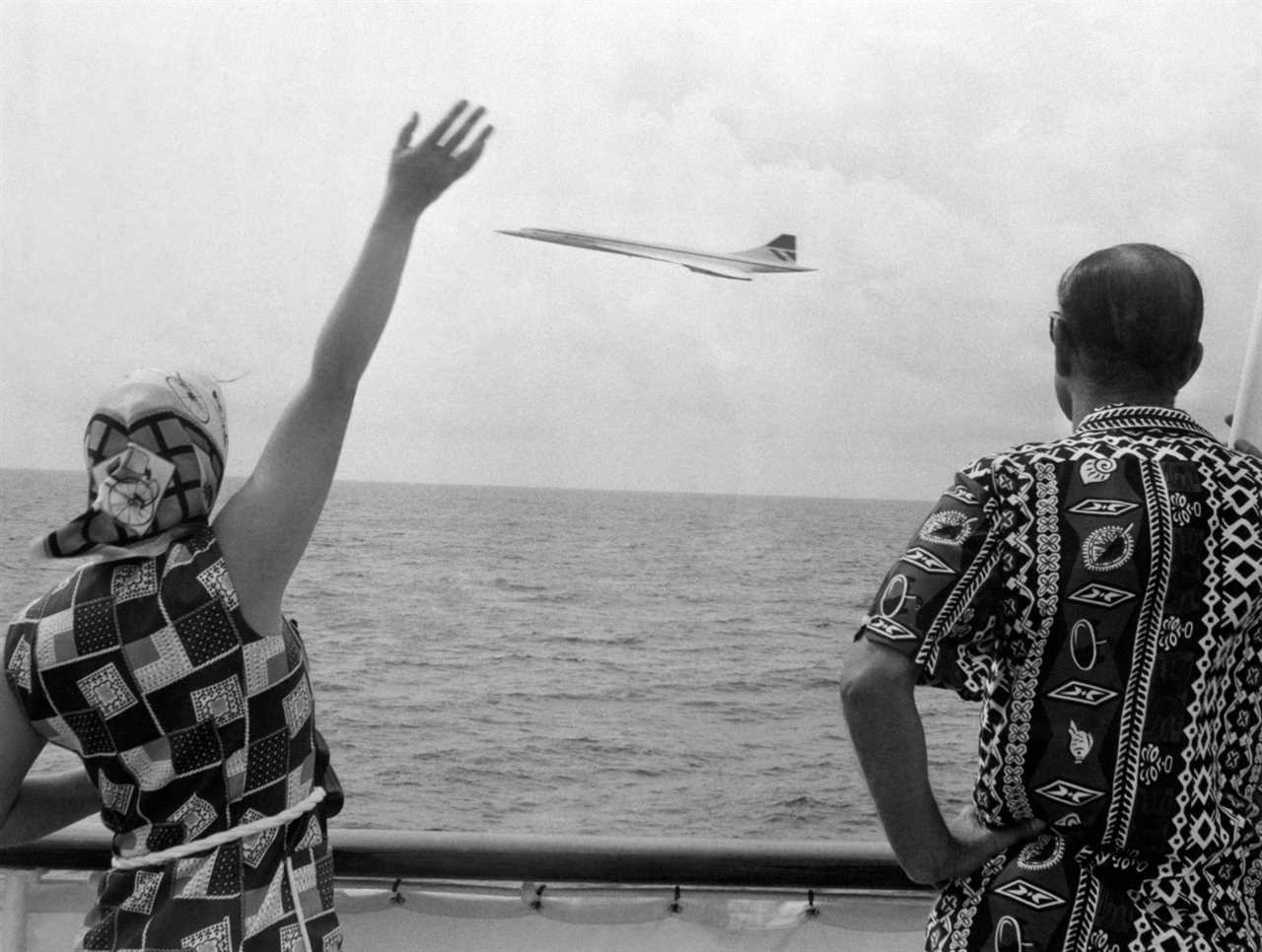
The Queen, with Prince Philip, waves to Concorde from the Royal Yacht off Barbados during her 1977 Silver Jubilee
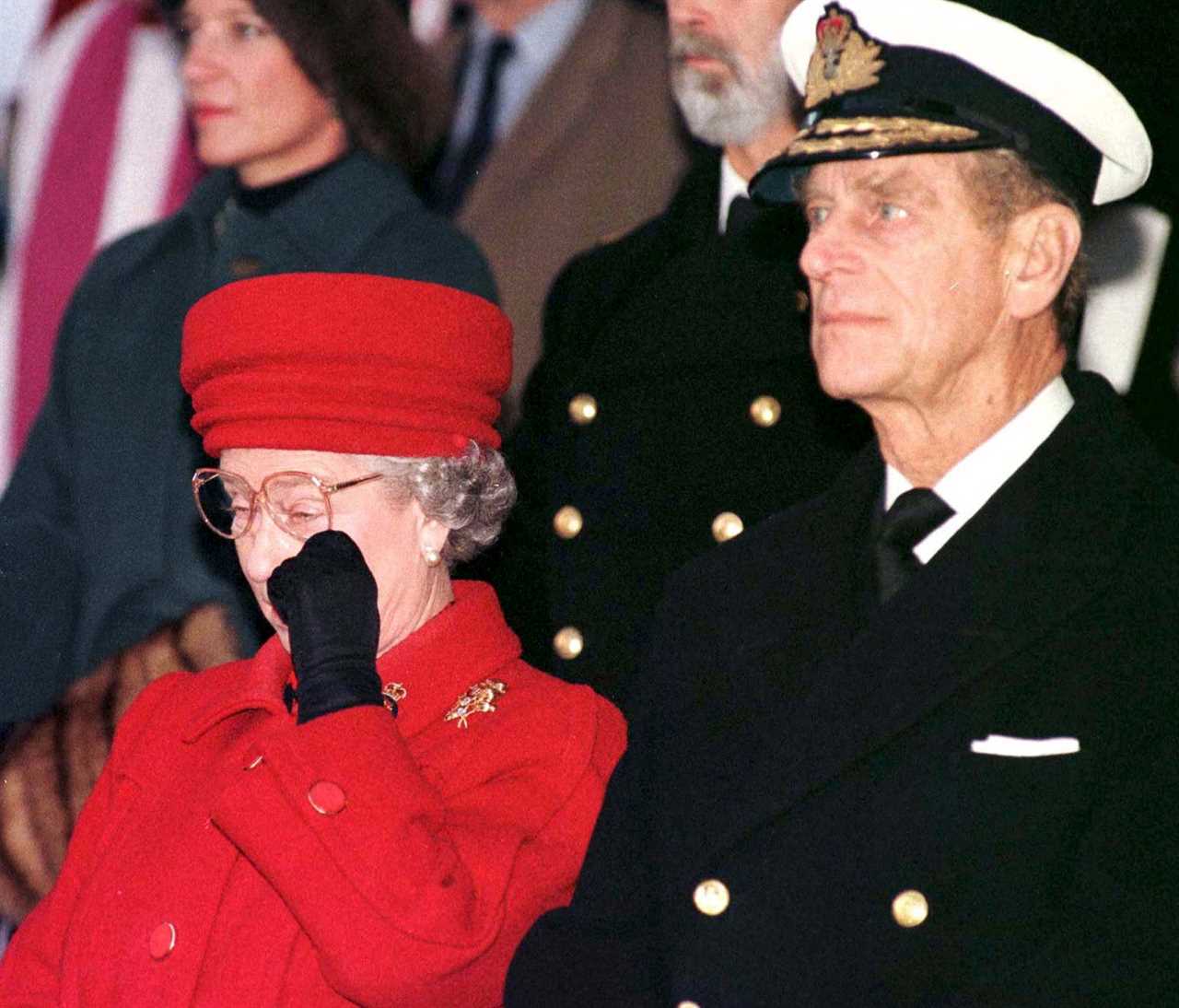
Her Majesty wept at the Royal Yacht Britannia’s decommissioning service in 1997
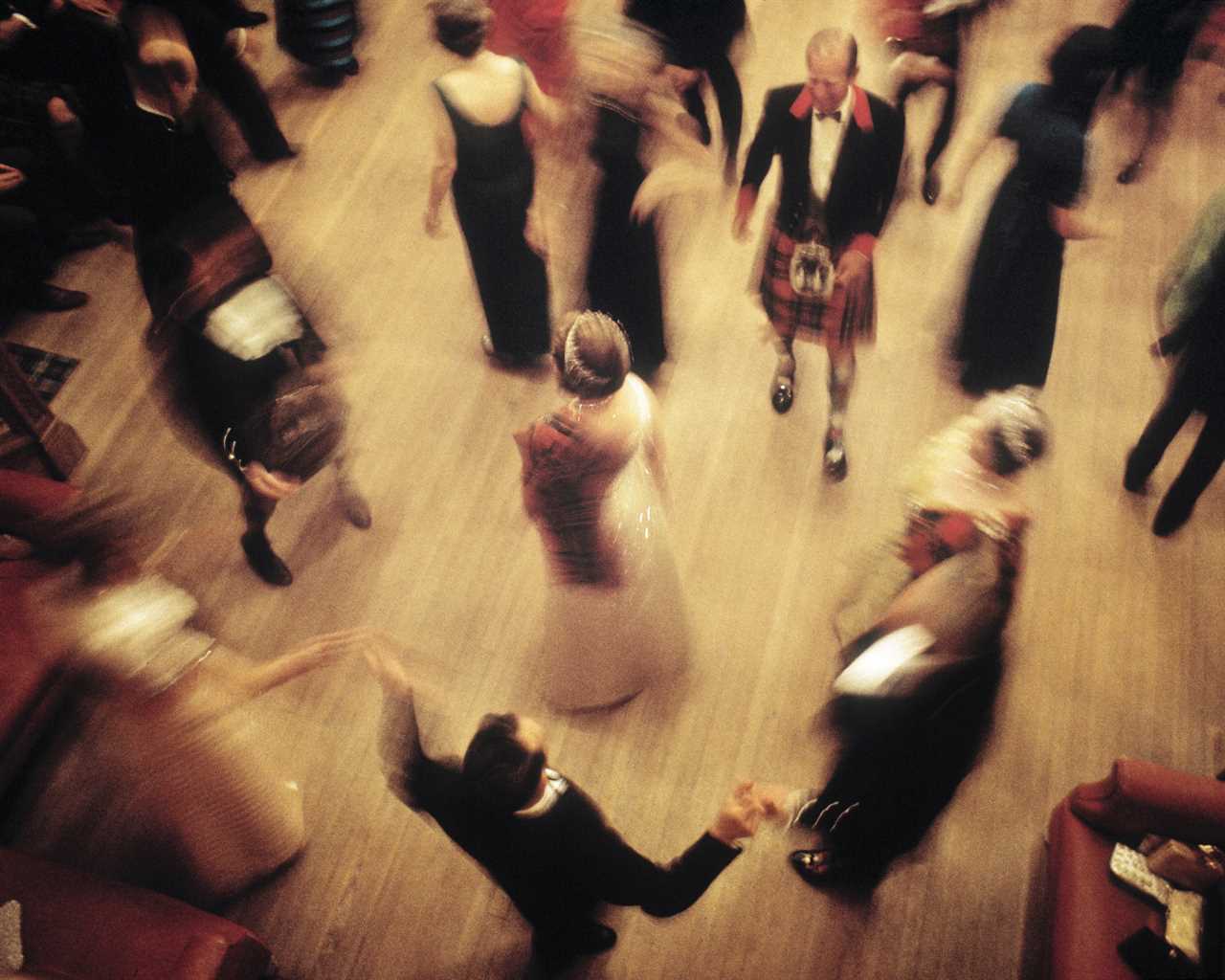
The Queen dancing with Philip and the Queen Mum, right, at Ghillies Ball, 1971
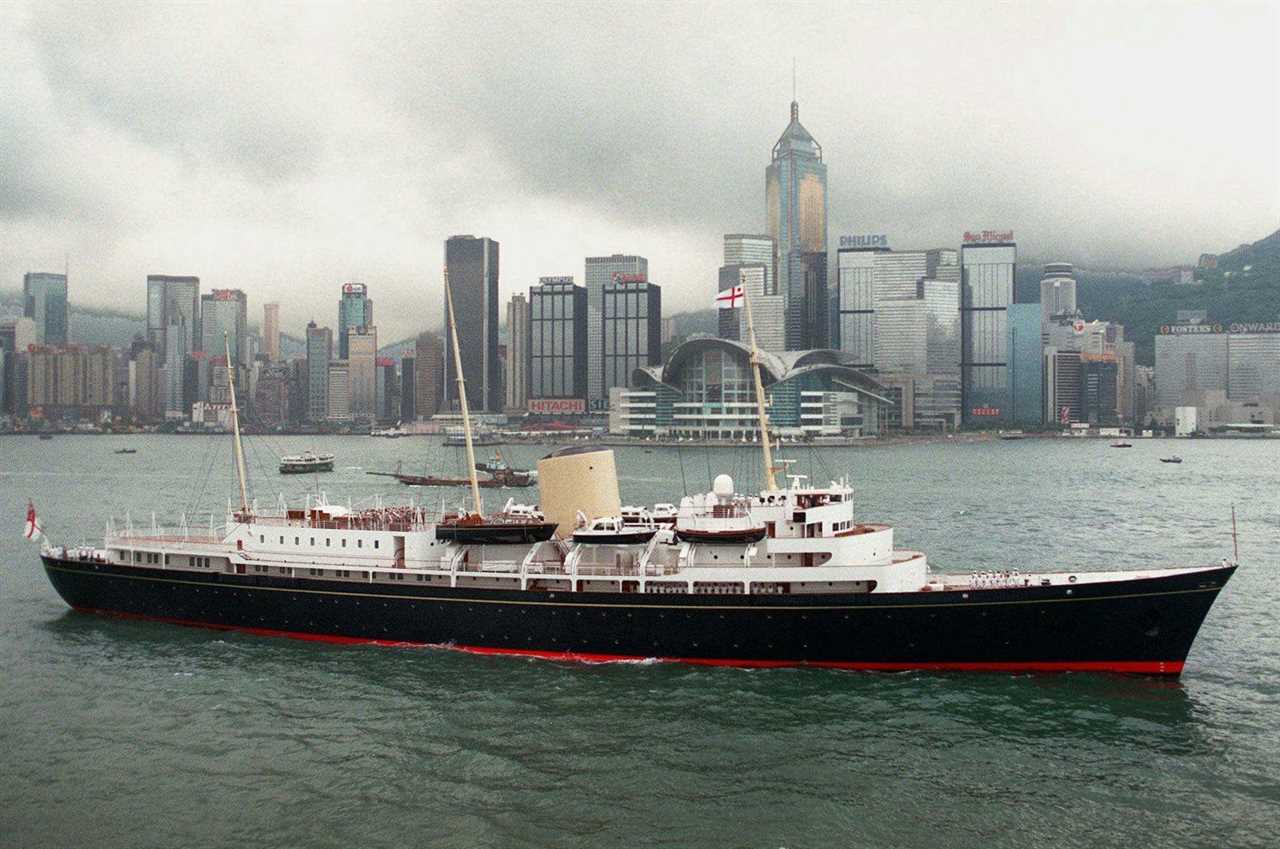
Britannia in Hong Kong, six months before she was taken out of service

